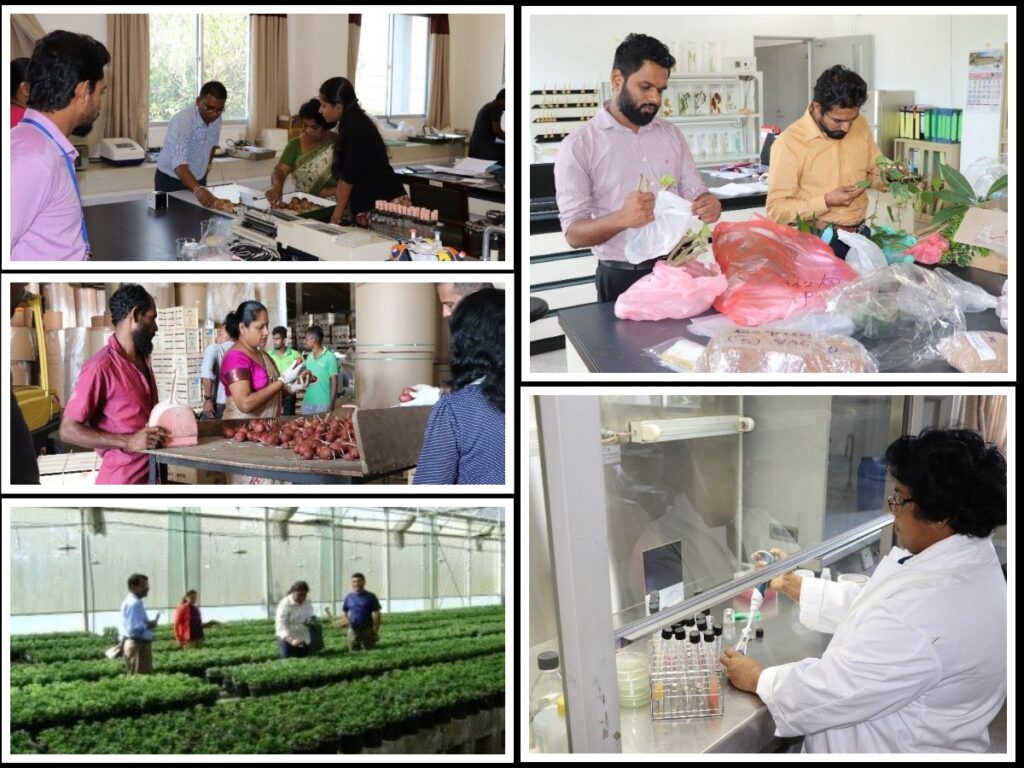NPQS Plant Pathology Division
Virology. mycology and molecular laboratories of pathology division, functioning under the National Plant Quarantine Service- Katunayake is entitled to facilitating international movement of pathogen Irec plants and plant based products to meet the ultimate vison of the institute as whole body As a partaker of this mission. enforced by plant protection act No 35 of 1999 and amended rules and regulation we are responsible to avoid introduction, establishment and dissemination of
pathogenic microorganisms during the international transit while becoming leaders of in-house pathogenic management to expedite the customer requirements.

Activities & Services
Inspection of plant nurseries and production fields
- All the disease identification techniques universally accepted are followed on requirement
- Auditing export vegetable nurseries
- Advisory services for plant nursery men/ coir exporters
- Conducting training and awareness programmes
- Studies on the diseases of imported seed potatoes
- Research activities related to plant quarantine
Identification of pathogens
- Export consignments – foliage, coir, vegetables, fruits, flowers
- Import consignments
- Submitted samples by nursery men
Identification Methods
- Visual Observation
- Microscopic Observation
- Humid Chamber Method
- Culture Plate Method
- Bio-chemical tests
- Ooze test
- Strips
- ELISA
- Molecular Techniques
Identification Methods
Visual Observation
Samples check for disease symptoms and for any disorder by naked eye.
Microscopic Observation
- Light and inverted microscope is used to identify the fungal pathogens
Humid Chamber Method
- Live samples are kept at the chamber under high RH conditions to facilitate the sporulation.
- Grown spores and mycelium observed under the microscopic contions
Culture Plate Method
- Samples with disease symptoms are culture on nutrient media to facilitate the pathogen growth.
Bio-chemical tests
- Basically practice for bacterial identification
- Organisms utilize different organic compounds for their metabolisms and colour reactions, solidification or liquefication of media are used to distinguish the pathogenic group.
ELISA
- Used to identify viruses based on antibody and enzymatic reactions
Molecular Techniques
- Any type of pathogen can be identified with high precision by using this tool. Specific primers are employed in identification.
Contact Us
- Head of the Division : Mrs. MHAD Subhashini
- Designation : Assistant Director of Agriculture (Res)
- Email : subhashinimhad@gmail.com
- Telephone : +94 11 225 2028/29 - Ext :215
- Mobile : 0094 71 8456784
- Open : Mon to Fri - 8.30am to 4.15pm (Closed on weekends & public holidays)

